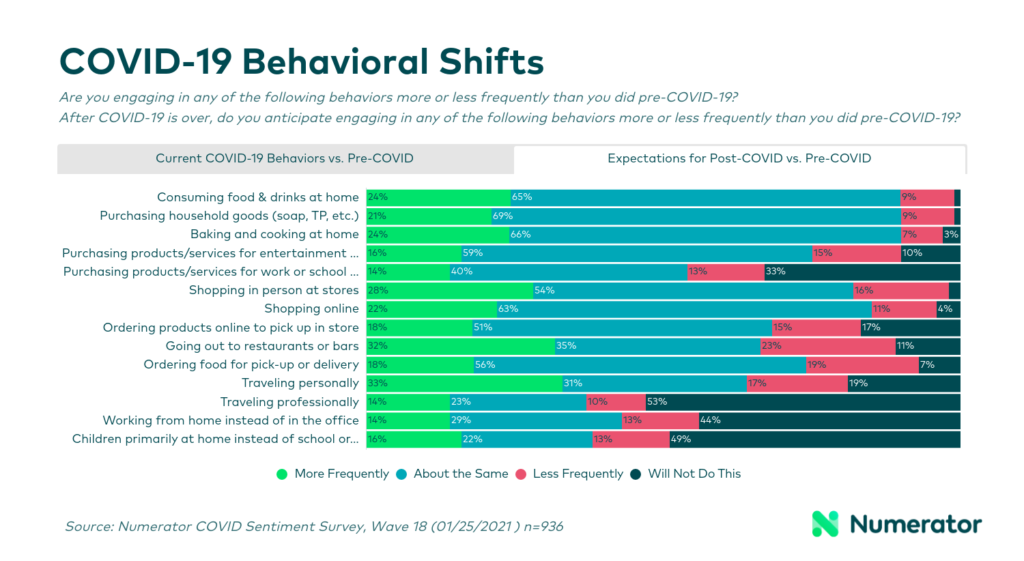Retail Staffing in 2021: The Shape of Things to Come
Many retailers are glad to say goodbye to 2020. Scrambling to meet the challenges wrought by a worldwide pandemic, they adapted to drastic changes in consumer behavior. Retail staffing strategies were revamped to meet shifting customer expectations and shopping habits. Some of the changes will likely stick around. Adapt to these trends now and you can say hello to a bright 2021 with a plan that will improve your bottom line now and in the years ahead.
1. Protective Measures
Even though COVID-19 vaccines are now available, the lag in delivery and lack of data about their long-term effectiveness means that mask-wearing will likely continue to be required as they are now, and protective shields at counters will continue to be used. Most retailers are expected to continue a mandatory employee mask policy through 2021.
2. Roving Checkouts
The fallout from contact-less checkout methods is an increased reliance on self-checkout machines and mobile checkout technology. One study shows that 52% of consumers are irritated by having to wait in line to pay. But without a salesperson there to manage purchases, retailers miss out on opportunities to nurture customer relationships. On the other hand, when you pull cashiers out from behind a checkout counter and allow them to assist customers as roving checkout specialists – properly masked, of course, a one-on-one, personal interaction takes place—socially distanced, of course. Customers can get product, return, and exchange questions answered, and associates can suggest items for future purchase. This goes a long way toward improving brand and store loyalty.
3. Focused Sales Training
If only because the sales cycle often begins with digital conversations and online information sharing, in-store sales staff may spend less time interacting with customers. This makes every minute of every in-person interaction that much more significant to enabling and upselling purchases. Highly trained, high-performing sales teams who have comprehensive product knowledge are essential to the in-store customer experience. As product ambassadors they can convey the benefits and features of even the most complex technology in a way that customers can understand.
A McKinsey study states, “Companies should not cut their employee training budgets. … Use your training budget to make skill building a key strategic lever for adapting to the next normal.”
4. Workforce Outsourcing
In an effort to maximize productivity amidst buttoned-up operating budgets and cost-cutting measures, retailers can eliminate the time-consuming tasks and expenses of sourcing, recruiting, onboarding, and scheduling sales staff by relying on a third-party outsourced staffing firm. A recent article on outsourcing relevancy published by Deloitte noted, “Having a large pool of outsourced on-demand talent means companies can rapidly scale their workforce without the need to hire additional full-time employees…”
Outsourced staffing firms with robust, continuous staffing capabilities ensure that only the highest quality candidates are put on board. Revenue losses associated with turnover are reduced. Retailers can then focus energies on maintaining the speed and agility to quickly navigate the ups and downs of the pandemic’s effect on business and respond quickly to customers’ needs in a post-COVID-19 world.
5. Sales Staff Analytics
Relying on a firm that uses advanced analytic tools to manage end-to-end staffing can reduce costs, lift sales and improve the customer experience. Staff outsourcing firms use rigorous, proven data collection and metric reporting methodologies that measure everything from individual store sales to sales and revenue generated per individual employee and per transaction, and more.
According to a 2020 McKinsey report, “Chief operating officers have begun looking closely at store activities and taking a more data-driven approach to labor scheduling and budgeting. In doing so, they have captured between 4 and 12 percent in cost savings while also improving customer service.”
Higher performing sales team members can be scheduled to match peak sales hours and sales placement can quickly respond to nuanced labor requirements—for instance, boosting sales during a special promotion. Retail executives gain visibility into the exact metrics that matter.
Looking Ahead
In anticipation of a post-COVID world, according to a January 2021 survey, 28% of consumers say they will shop in stores more frequently, 54% will shop at the same frequency, and only 16% will shop less frequently. To borrow a legendary phrase attributed to Mark Twain, “Reports of the death of in-store retailing are greatly exaggerated.” So, it behooves smart retail executives to adopt staffing strategies that will breathe new life into profits and revenues.


